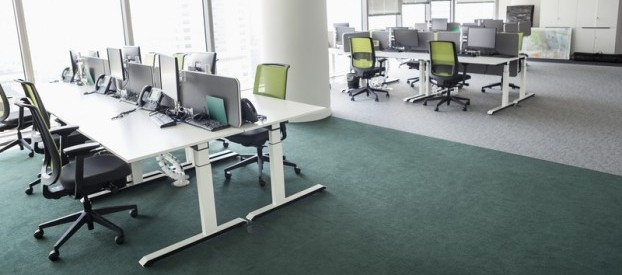In the cut and thrust of modern-day contracting, flexibility is king; and the ability to be able to travel with work, and work effectively remotely has never been more important. We consider how you can achieve the ultimate goal of a virtual business; something that can be managed from anywhere in the world with just a laptop and a WiFi connection
Step 1: Set up a virtual office address
A lot of contractors set up their first company using their home address, but that approach can be riddled with problems
- Whenever you move house, you have to go through the painful process of changing your address with HMRC and all of your clients and customers. I have also found from personal experience that banks often hold multiple instances of your address across different accounts and systems, and it can take months to iron out teething problems. I once ended up having to physically drive to a previous address and knock on the door to retrieve a vital set of bank statements from the property that I needed for a submission deadline for my annual accounts
- As my accountant always tells me, HMRC doesn’t like businesses that are constantly changing their address. This was a problem for me a few years ago because I was living in rented accommodation and moving around with work, so I had to change my business address multiple times within the space of 2–3 years
- If you are in rented accommodation on an assured shorthold tenancy, it will probably exclude you from using your rental address as a business address; and you may also find that your local council technically prohibits you from this as well (although they would normally only show an interest if you had customers coming and going from the property, which is unlikely to be the case for a contractor)
- Residential addresses also look unprofessional. Your website and your business stationery should all display your business address, so think carefully about what message your home address is projecting to potential clients
There are plenty of companies that offer virtual office addresses in the UK, and many of those will offer telephone and mail handling services as well. Regus is a well-known example, but there are plenty of independent local and regional companies that offer exactly the same for the same or less money, such as Mail Boxes Etc. It is worth shopping around because prices vary considerably (particularly if you are happy with a non-London address). Your accountant may also provide a business address you can use for your company-related paperwork, e.g. Companies House
Step 2: Set up a website and web-based email address
This is the easy bit because most small business website packages will include a web-based email address that you can access wherever you are. My top tip, though, is to get a package that supports IMAP, so you can send and receive company email directly from your Gmail or Outlook account rather than having to constantly log in and check for messages. Services like Google Workspace or Zoho Mail are ideal for this
Step 3: Set up a virtual company telephone number
Although it is increasingly acceptable to just use your mobile phone number in business communications – even in large organisations – there is still something reassuring about a landline. Most virtual offices will offer call handling services but if you only have a small call volume, this is probably an unnecessary expense. I found it simpler to set up a redirection to either a landline or a mobile using services like Yay.com or Soho66. You can also manage calls via an app on your phone
Step 4: Use hot desking
If you normally work on a client site, this will not be relevant; but if you work remotely, hot desking is worth considering. I have worked from Scarborough to Sarajevo on a combination of dining room tables, kitchen work surfaces, coffee tables, or perched on the end of a sofa; with varying degrees of success. However, I can say that I am generally most effective working at a proper desk with a proper office chair, away from my home environment; and this is where I spend the majority of my time now
There are hot-desking facilities all around the UK, from as little as £10 per day – Regus is worth a particular mention because it has good coverage if you move around a lot, or less if you are prepared to make a longer-term commitment. Spaces is another popular co-working option. Hot desking has the added advantage of being a bit more sociable than working at home, with additional opportunities for networking
Step 5: Digitise your accounts
FreeAgent is fast becoming the de facto standard for contractors, and for good reason. It does everything that you need, and it does it well. I combine FreeAgent with Dext (formerly Receipt Bank), which means that whenever I get a receipt for a business expense, I scan it straight into my phone and upload it, eliminating the usual monthly paper chase. The software can link up to your bank account, and even to HMRC, so you can submit your VAT returns from within the application
Step 6: Virtual mail
Most virtual offices will offer a mail handling service but the problem I found is that I was constantly missing important pieces of mail during the week while I was working away from home. I recall one particularly nasty example where I came back from a 2-week stint to find a demand letter from HMRC for an overdue VAT payment
The answer eluded me for a long time but it finally arrived in the form of UK Postbox, which is a digital mail handling service originally targeted at expats living abroad who needed to retain a presence in the UK. You can either redirect mail through Royal Mail to a UK Postbox address or permanently move your business address to one of their virtual addresses. As mail arrives, the contents of the envelope are scanned to PDF and then you can either store a digital copy or forward it to yourself anywhere in the world
It works the other way around, as well. You can write a letter, scan it, upload it, and post it back without ever having to visit a post box or buy a stamp. I have completed the circle by making a high-quality scan of my signature that can be inserted at the bottom of any document that requires it
Step 7: Virtual filing cabinet
The final piece of the puzzle. I had a bulging 2-drawer filing cabinet for the first 6 years as a contractor and, even though I referred to it relatively infrequently, I knew that it was critical to retain those records. I finally took the leap of faith and scanned everything as a ‘searchable PDF’ and uploaded it to a virtual filing cabinet on Dropbox. You can also use Google Drive or OneDrive. Not only have I freed up some valuable space, but I also know that I have instant secure remote access to all of my documents, past, present and future from wherever I am
If you have a huge amount of paperwork, it might be worth considering a one-off submission to a bulk scanning company. I decided to go it alone with my trusty HP OfficeJet printer-scanner which only cost me a few hours of my time
2025 extras
Secure remote access
If you’re often abroad or using public Wi-Fi, it’s a good idea to use a secure VPN such as NordLayer or ProtonVPN. Use a password manager like Bitwarden to keep everything safe.
Digital signatures
Instead of scanning signatures, use proper e-signature tools like DocuSign or HelloSign to sign NDAs, contracts and timesheets securely.
Admin automation
Contractors increasingly use tools like Zapier to automate calendar invites, invoice reminders and file backups. You can also use Calendly to let clients book calls or timesheets without having to email back and forth.
This guide was originally written and inspired by Peter Roy, a freelance project manager and productivity guru, and has been updated by the ITContracting team for 2025.
Recommended Limited Company Accountants
- SG Accounting – Join SG and get first 3 months @ £59.50pm
- Clever Accounts – IR35 FLEX. Take on any contract you're offered
- Aardvark Accounting – Complete service just £89/month
- Integro Accounting – 6 months fixed fee accountancy - half price!


